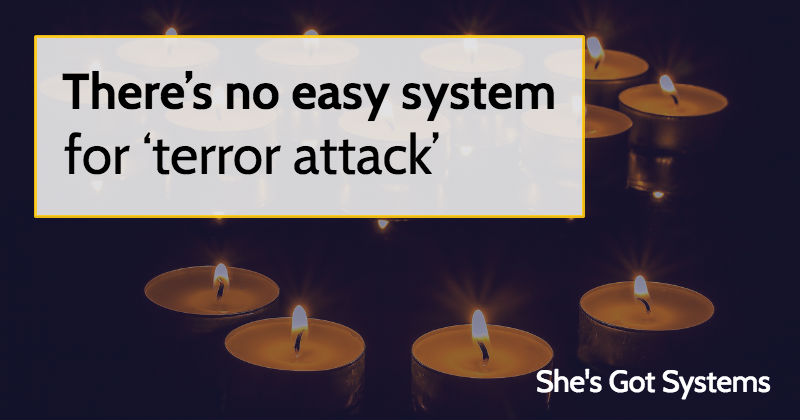I’d planned a much different message this week, but as life sometimes goes, normal can be thrown into chaos in a moment.
On Monday night, there was a suicide bomber in Manchester who targeted the young crowd of a pop concert in a large stadium. Just the idea of someone attacking children at a concert still makes me sick.
As the news broke in California, it was already the early morning hours in the UK, so it was early Tuesday before I could touch base with my fantastic designer and friend Rachel and my extended family living in the area to ensure all were safe. Unfortunately, the families of 22 people did not receive the good news and are dealing with this tragedy as best they can.
While I’m heartened to hear of hotels opening their doors to the concert goers who were fleeing from the scene, taxi drivers offering a free ride, and hundreds of Brits donating blood for the 50+ injured in need, I also started thinking about the things I do and tools I turn to when something horrible happens.
The first tool for information is social media – Facebook has rolled out in recent years the option to mark yourself as safe when you’re near the site of an incident. This can help someone who is near, but not involved in a disaster to share with all their friends simultaneously and avoid returning dozens of calls and texts.
The second tool is the news – even if you believe in a media bias or that they sometimes get it wrong, journalists are trained and have extensive experience bringing the facts (as they are known at the time) to the public. This includes listening to official statements from police or government agencies who – surprise, surprise – have more accurate information than strangers on Twitter.
Earlier this year when the Oroville Dam was compromised due to heavy rains and a broken spillway, I was so frustrated and annoyed at the open lies and fear mongering happening on Twitter. When people are in danger and scared and worried, get facts from the people best able to ascertain and share them – not unverified sources. In fact, “pranksters” online Monday night were circulating pictures of children and teens supposedly missing – none were actually involved but the panic they caused was not funny, it was opportunistic.
The final “tool” is to speak up with words and actions in support of the victims. As I shared with a friend from Manchester, it’s hard to know what to do when you’re so far away. In a natural disaster, check in with the Red Cross or local charities to ask what kind of support they need and realize that most often it’s money. Not only will your dollars go further because they can buy supplies at cost, but help will also reach those impacted faster.
I do believe it’s important to share words of support and encouragement when there’s a terror attack (since this is a war of ideology), but marry that with action. I’ve seen friends propose 22 acts of kindness, donating blood, or sending cards to those still in the hospital, and there are so many ways to help.
Remember that in tough times, there is no easy system to recover, there’s no 5 step process to ensure you’re not harmed or to protect yourself and those you love.
One of my favorite quotes comes from Mr. Rogers ““When I was a boy and I would see scary things in the news, my mother would say to me, ‘Look for the helpers. You will always find people who are helping.”
So when there’s a bomb in Manchester or flooding in Louisiana, when chemical weapons are used on the people of Syria, or an earthquake hits Nepal, be the helper. Connect with those you love to ensure they are safe, offer words of support, and give to those people and organizations on the ground.
I pray that you and your loved ones are safe.

 Does Business Productivity Matter?
Does Business Productivity Matter? You’re (not) Hired!
You’re (not) Hired! Empathy for Entrepreneurs
Empathy for Entrepreneurs